|
|
ADDRESS AT THE BIRTH CENTENARY CELEBRATIONS OF GENERAL K.S. THIMAYYA AT MADIKERI KODAGU DISTRICT, KARNATAKA
07-04-2006 : Madikeri, Kodagu District, Karnataka
Indomitable Spirit
I am indeed delighted to visit the land of Kodagu. I always wanted to visit Kodagu because of its beautiful natural environment, with rivers, hills and bio-diversity and above all its people and it is the great birth place of the great warrior Gen. Thimayya. Also, I cherish the memory of Mercara, in 1950, because I had a classmate and hostelmate in St Joseph?s College Trichi,
I am happy to participate in the birth centenary celebrations of General KS Thimayya. Gen.Thimayya with all the great honours he received felt that the biggest honour was the love of his officers and men and the trust of the country as its first soldier. In a tribute to Gen Thimayya, Lt Gen.PS Bhagat,VC states ?A Gen Thimayya is not born in every generation and in every nation. It was fortunate for us to be of the generation and the nation of Gen.Thimayya. The like of him there will seldom be ? a Soldier General, the Army his soul, his soul the Army?. I was very much interested to know Gen Thimaya?s strategy, bravery and action to share with you, particularly with young people. Two days back I came across a beautiful book of remembrance called Amar Jawan- edited by Admiral Nayyar and sponsored by Ballarpur Industries. This book was brought out to honour the supreme sacrifices made by the armed forces in defence of the motherland during the last 50 years after independence. In this book two inspiring war scenes are described. One about the battle of Zojila and Assault on Zojila. Let me describe the bravery and decision making power of Gen.Thimayya.
Operation BISON LEH and LADAKH
On September 1948, 77 Para Brigade went into action to capture Zojila Pass. So strong was the enemy position that the Battalion attacking Zojila frontally could make no headway, despite adequate artillery support and strafing the enemy position by Tempest aircraft. Another attempt on September 13th also failed. Instead of bashing their head against this strong enemy position on the Pass, General Thimayya came up with a truly ingenuous and bold plan. He decided to use light armour to dislodge the enemy from Zojila and then make a dash for Dras and Kargil. Tanks had never before operated at such heights anywhere in the world. The movement of tanks from Akhnoor in the plains to Zojila through various passes was itself a Herculean task and involved many engineering innovations. By October the tanks had arrived and the snow fall was also in the offing. This is exactly what happened on D-day October 20, 1948 and Op-Bison had to be postponed. A less determined Commander than Thimaya would have given up as heavier snows were expected thereafter. Thimaya in another bold decision declared Novermber 1, as the next D-Day regardless of the weather conditions. Full credit must be given to the CO of 7 Cavelry who did not hesitate to accept this seemingly impossible mission. During the assault, tanks were closely followed by determined infantry soldiers. Gen.Thimaya travelled in the leading tank up the treacherous gradients to the while hell of Zojila. It is to be noted that Gen Thimaya always lead from the front, often at great personal risk. We should all remember that because of this indomitable leadership of Gen Thimaya attempting out of the box innovative solutions, we have protected LEH and LADAKH.
I recall the farewell visit of Gen Thimayya to ACC Nowgaon, where he asked the young army cadets undergoing training to "Acquire qualities of leadership, impartiality, unbiased thinking and high sense of duty". General Thimayya believed that the Jawans were the most important men. He never questioned their motives and genuinely respected them. In this he demonstrated what Emerson once wrote:
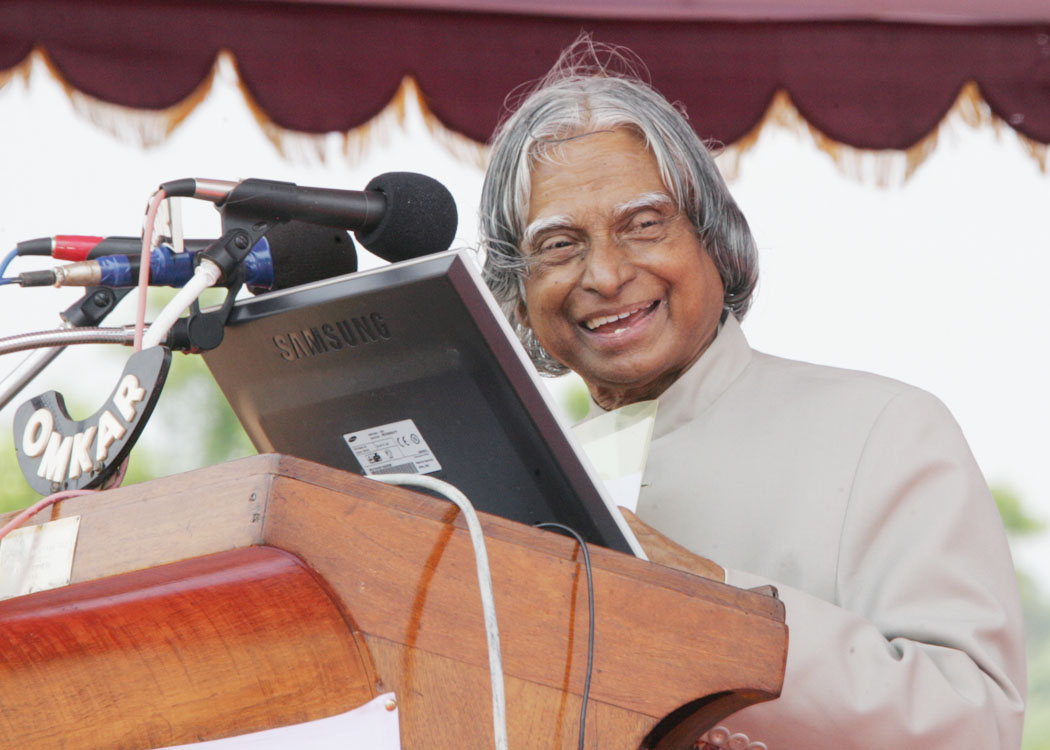
"Trust men and they will be true to you,
Treat them greatly and they will show themselves great"
One is tempted to ask why does Gen Thimayya stand out as the most eminent general of Indian Army?. The answer is in the excellence of the leadership, his integrity, his loyalty, his influence on people and above all his courage - all unsurpassable. He was definitely a role model for all the soldiers particularly the Officers, JCOs and Jawans serving in the Indian Army and the youth of our nation. The continued tradition of Gen Thimaya entered into all ranks of the army. One such incident I would like to mention is that of Second Lieutenant Arun Khetarpal, PVC of the Poona Horse, who laid down his life at the age of twenty while defending the motherland during the Indo-Pakistan war in 1971 in the Sakhagarh sector. I appreciate his supreme sacrifice and valour in the face of the enemy and his determination to hold his position gallantly. This is the tradition set by Gen Thimayya. I greet the Federation of Kodava Samajas, members of the Armed Forces, students and other distinguished guests participating in this birth centenary function organized in the memory of the great leader General KS Thimayya.
At this moment let me share with you my feelings which I had, while saluting the courageous soldiers who fought for our nation along with the Chiefs of Staff on 15 August 2005 at Amar Jawan Jyoti :
Lights our heart with courage,
Radiates to the nation, devotion,
Spread the message of sacrifice,
Ignites confidence upon our nation.
Courage to defend the nation, courage to innovate, courage to invent and courage to overcome the sufferings and to succeed, are indeed the traits that led to the growth of human civilization. Let us remember the courageous acts and events of our society on this occasion. I have selected the topic ?Courage led to the growth of Human Civilization?. Heroism has to be a national trait. It may be in Armed Forces, politics, societal transformation, facing a dreaded disease or in Science and Technology. Let me share with you some of the inspiring experiences of heroic deeds in the field of armed forces, political life, social system, individual life and science.

(b) Upsetting enemy designs : Marshal of the Air Force Arjan Singh
Promoted to Squadron Leader in 1944, Arjan Singh led the Squadron against the Japanese during the Arakan Campaign flying close support during the crucial Imphal Campaign and later assisting the advance of the allied forces to Rangoon, Burma. For his role in successfully leading the squadron in combat, Arjan Singh received the Distinguished Flying Cross (DFC) in 1944.
Later in 1965 Air Marshal Arjan Singh ensured that the air force struck the Pakistani offensive in an hour after the request by the Defence Minister in September 1965. He led the air Force through the war showing successful leadership and effort. It must be said that the credit for thwarting Ayub Khan's grandiose plans to capture Kashmir in September 1965 is shared by the Army and the Indian Air Force, and Arjan Singh for leading the air force through the war. Nation gratefully recognizes Arjan Singhji with the title Marshal of the Air Force. The great tradition of heroism exists in our armed forces.
Now I would like to discuss the courage of a great leader who fought against the apartheid and succeeded.
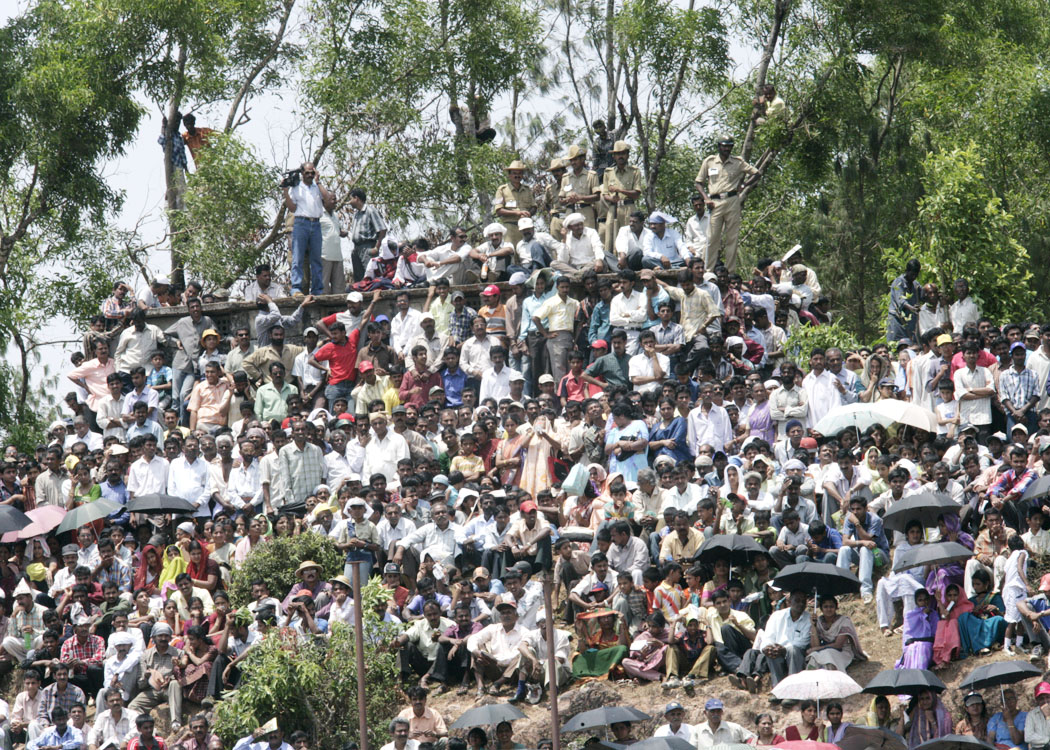

(c) Courage to fight apartheid and virtue of forgiveness
While I visited South Africa in 2004, I also a great personality who was responsible for the freedom of South Africa. Particularly for the young people, you can learn two lessons. They are: Courage to fight against apartheid and virtue of forgiveness. Dr. Nelson Mandela is indeed an embodiment of these two traits.
In South Africa, Cape Town is famous for its Table Mountain; it has got three peaks called Table Peak, Devil Peak, and Fake Peak. Between the peaks it was a beautiful sight throughout the day, sometimes dark clouds and sometimes white clouds embracing the peaks. Table Mountain is very close to the sea coast of the Atlantic Ocean. We traveled by helicopter to Robben Island from Cape Town in 10 minutes flight. By fast powered boat it will take 30 minutes to reach the Robben Island. When we reached the Island, except sea roaring, the whole island, was a silent island symbolizing the thought: this is the place the freedom of individual was chained. We were received at the Island by Mr. Ahmed Kathrada a South African, who was a co-prisoner. What surprised me was this: can you imagine a tiny room, where sleeping and all human needs have to be fulfilled. It has to be remembered that Dr. Nelson Mandela, who was 6 feet tall was imprisoned in that room for 26 years -fighting against the apartheid. The major part of his life was spent in this silent Island. He used to be taken for quarrying in the nearby mountain for a few hours in bright sun. This is the time his sight partially got damaged. In spite of his body being tortured, he revealed to the world the indomitable spirit in him. This is the time he evolved a manuscript of freedom in tiny letters every day, when the jail wardens went to sleep. This small tiny lettered manuscript finally became the famous book of Mandela "A long walk to freedom".
It was a great event for me to meet him in his house in Johannesburg. Dear friends, I would like to share with you, when I entered Dr. Nelson Mandela?s house, I saw his three dimensional form with cheerfulness: the mighty man who got the freedom for South Africa from the tyranny of apartheid. And also a person when he became the President of South Africa he gave the people freedom to move, freedom to live in South Africa to those people who specialized in apartheid and ill-treated and put him in jail for 26 years. Nelson Mandela accepted them as equals citizens who ill-treated them practicing apartheid. Dear friends, a big lesson that we learnt from this personality Dr. Nelson Mandela which is explained in one of the Thirukkurals, written 2200 years before.

which means, for those who do ill to you, the best punishment is returning good to them to make them feel their guilt.
Now I would like to discuss the courage shown by a lady who was virtually abandoned by her family.
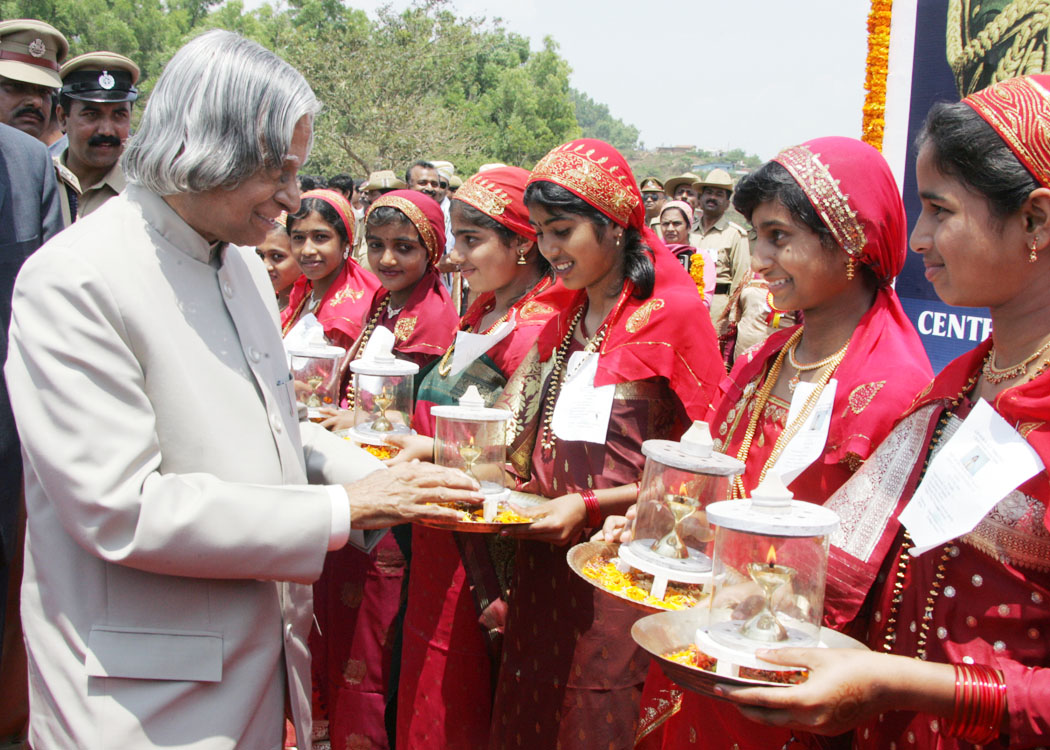

(d) Courage to face social stigma
Recently, when I was in Bangalore, I addressed the members of CII attending the Leadership Conclave. There I asked two questions to be answered by every one of the participants. The two questions were (a) What I have learnt so far? (b) What I will be remembered for? I asked the members to correspond with me through email. One of the members in the Conclave was Smt. Asha Ramaiah. Smt Asha Ramaiah, who is working as national advocacy officer for Indian Network for people Living with HIV/AIDS., who herself is a HIV/AIDS patient since 1995 gave touching answers to both these questions
As an answer to the first question Smt Asha
Ramaiah said,
"The true learning in my life began when I had to face the reality of my situation, when my husband's family turned me away from their home and later when my father told me to leave our house. I was like any other women who was allowed to flow with the currents of destiny. I learnt that I have to stand up to hold my precious life protected. At the first instance I had to stand up and face up life in awe, but thanks to the strength of my womanhood, which made the feeling of shock, a realization that my loved ones need support and I am responsible to take efforts to bring change in the lives of People Living with HIV/AIDS in India.
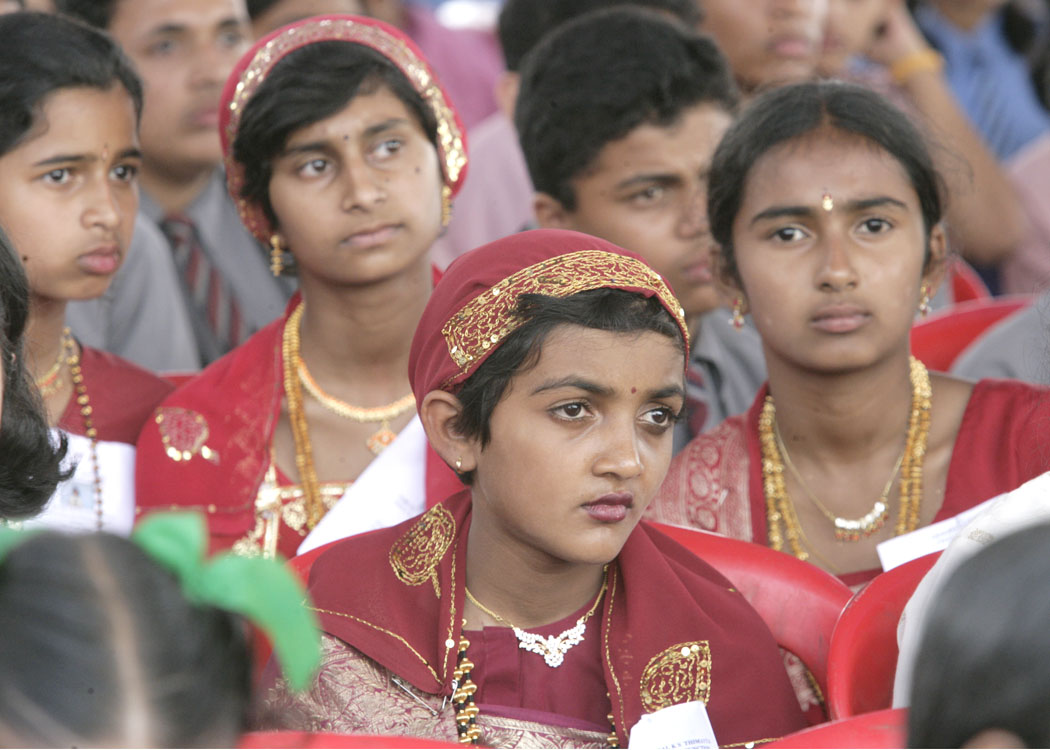
"I always felt that I had my opinions. But, when I have to face HIV, I realized the need to stand up and voice my opinion."
"Today with constant efforts that I made, and the support that received from my fellow people living with HIV, I received an acceptance in my community that even people of good standing come to me for an opinion, guidance and counseling on various personal issues. My parents are proud to share the testimony of my experience as a role model for others to follow. With a convinced family and a good peer support, I got remarried to another person living with HIV in 2000. He has given me ample support to work with my fellow people living with HIV for betterment of our lives."
"I learned when we had to decide upon having a child, how difficult it is for one to make decisions at the face of uncertainties; plunging in to the unknown that may have the risk to hold the responsibility of giving birth to an HIV positive child. We decided to follow the medical guidelines to reduce the risk. When we came victorious waiting for years and confirmed that our child has no infection, we learnt that, dreams come true only when you are ready to accept the responsibility of any possible risk in taking steps."
"Now we have the responsibility for planning the future of my child for the next 20 years. Our quality lifetime can be utilized for imparting our parental responsibility by ensuring him education, security and future. I also learned that I have the responsibility to share the message that all parents living with HIV/AIDS should take effort to access information and plan their children?s healthy future."
For the second question What I will be remembered for? Smt Asha Ramaiah says,
"I will be remembered by the People Living with HIV/AIDS of many parts of the country and my family, relatives and associates for the courage, I showed to stand up and face life, and for my efforts in sharing the light I have acquired in the midst of struggle."
Friends, the message we get from the above experience of Smt Asha is that as human beings we may get into a problem. But we should not get defeated. We should find out ways of converting this very problem to our advantage through courage. Now I would like to discuss the courage of three of my friends who are fighting cancer valiantly.
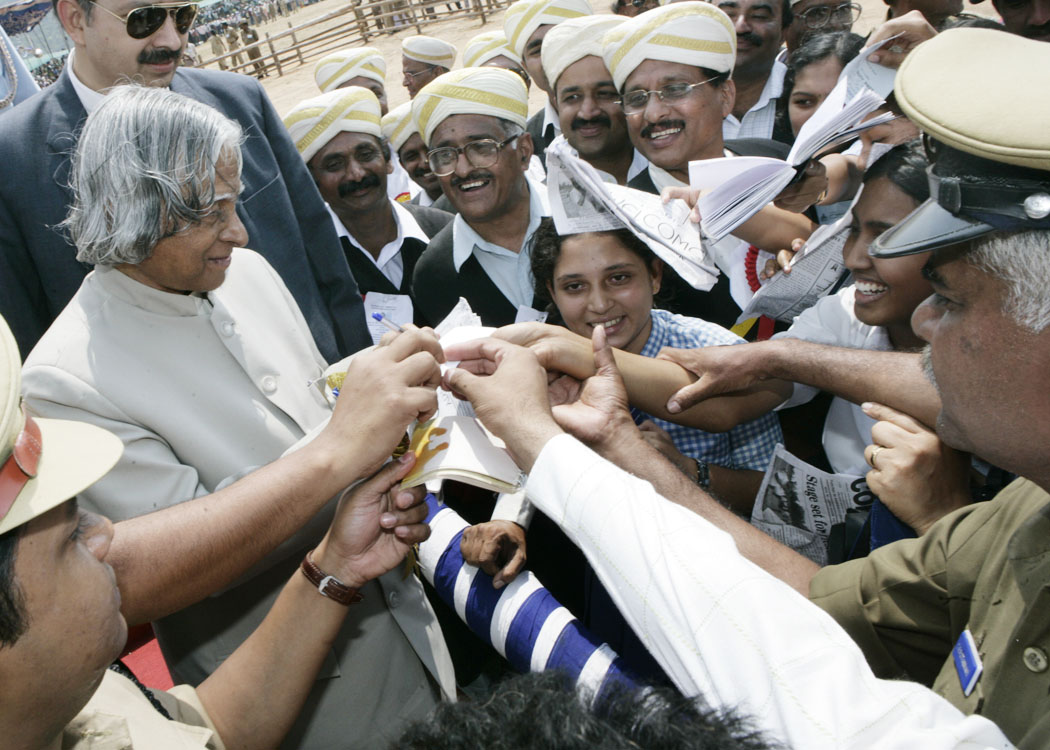

Warriors of Indomitable Spirit
The first one is a technologist, second one is an author and the third one is a painter, all three are handling their blood cancers with courage. Undaunted by the presence of a disease of poor morbidity in their bodies they are relentlessly pursuing the mission of life. The technologist-industrialist who is suffering from cancer for 20 years says, like a gladiator, he says he will defeat his cancerous cells. He is continuously contributing technologically and innovating for his industry. Every year he is publishing a book on me and releasing it on my birthday for the last three years. The second courageous personality is a biographer and he has written many books on people. He named the recent book as "Celebration of cells" that narrates the indomitable spirit of the personality. The third courageous personality is a painter whom I invited to stay in the Rashtrapati Bhavan. He created beautiful paintings capturing the beauty and life in Mughal Garden. He showed me a painting which was most beautiful and he said the paintings was his best. I asked him how it got evolved. He said when he went through chemotherapy at the Tata Memorial Hospital, the pain was very heavy during the process of chemotherapy. The painting got evolved out of the pain and he said during the process of painting he got great relief from the pain.
The message of these three friends of mine is that cancer can be defeated through courage, medical treatment and blessings of the Almighty.
Now let us discuss the scientific contribution of Madame Curie with courage and determination.

Madame Curie
Madame Curie was born to Maria Sklodowski in Warsaw, Poland in 1867, the youngest of five children. When she was born, Poland was controlled by Russia. Her parents were teachers, and she learned at an early age the importance of education. Marie studied physics and mathematics and quickly received her masters' degrees in both subjects. She remained in Paris after graduation and started research on magnetism.
For the research she wanted to do, she needed more space than her small lab. A friend introduced her to another young scientist, Pierre Curie, who had some extra room. Not only did Marie move her equipment into his lab, Marie and Pierre fell in love and married.
A friend of the Curies, A. Henri Becquerel, had been playing with recently discovered properties of the element uranium. He talked to Pierre and Marie about those properties and they became interested in them too. Marie Curie set about investigating the effect, which she named "radio-activity" for her Doctorate research.
Marie Curie checked many other elements to determine whether they too were radioactive. She found one, thorium, and also came across a source of radiation in a mixture called "pitch-blend," which was much more powerful than either thorium or uranium.
Working together, it took Marie and Pierre four years to isolate the radioactive source in the pitch-blend. Marie named it radium. For the discovery of radium, Marie and Pierre won a Nobel Prize in Physics in 1903, which they shared with their friend A. Henri Becquerel. Shortly, Marie found that what she had discovered was not pure radium, but she was able to isolate the element itself after quite a struggle. For this work, she was given the Nobel Prize for Chemistry in 1911. Madam Curie achieved the distinction of getting two Nobel prizes.
During her work, Marie discovered radiation could kill human cells. She reasoned that if it could kill healthy human cells, it could kill diseased human cells and went about isolating radium for use in killing tumors.
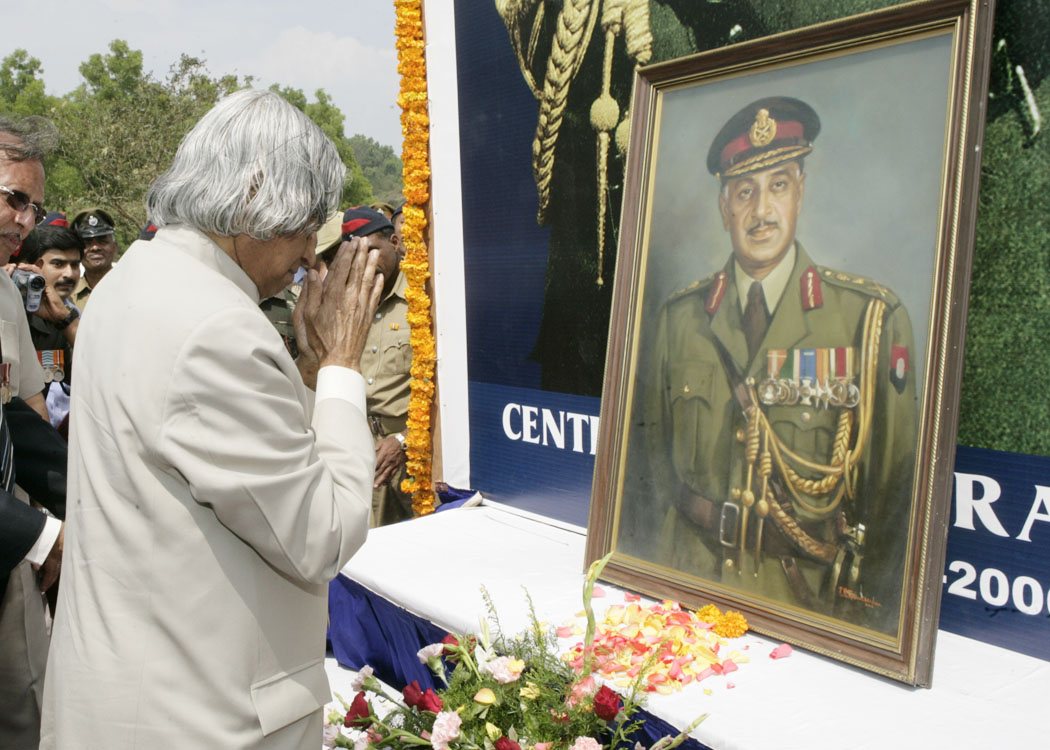
In 1906 Pierre Curie was offered the position of director of the Physics Laboratory at the Sorbonne. Before he could take the position, however, he was run over by a carriage and killed. After her husband died, Marie was offered and took the position, the first woman to become director of a research laboratory.
During the first World War, Marie Curie went to work for the French designing and building X-ray machines. Knowing that moving soldiers to a hospital before they needed surgery was not always possible, she designed the first mobile X-ray machine and traveled with it along the front lines during the war.
On July 4, 1934, Marie Curie died in Paris, killed by her own experiments. She died of radiation poisoning and may have been the first person to do so. Marie Curie had brought herself up from poverty, struggling to get her education and succeeding brilliantly. The work she did, she did with patience, often getting results only after years of careful experimentation, while struggling for money to support her work. For her struggles, she received two Nobel Prizes - the first woman to win even one. Through the knowledge she gained, thousands of lives have been saved. The courage and perseverance shown by Madame Curie in her pursuit of scientific mission and achieving successes are indeed remarkable and stimulating.

Conclusion: Indomitable spirit
Let me share with you young and experienced a beautiful message on courage from a Indian Nobel Laureate Sir CV Raman, at the age of 82. The message is still reverberating in my mind: "I would like to tell the young men and women before me not to lose hope and courage. Success can only come to you by courageous devotion to the task lying in front of you. I can assert without fear of contradiction that the quality of the Indian mind is equal to the quality of any Teutonic, Nordic or Anglo-Saxon mind. What we lack is perhaps courage, what we lack is perhaps driving force which takes one anywhere. We have, I think, developed an inferiority complex. I think what is needed in India today is the destruction of that defeatist spirit. We need a spirit of victory, a spirit that will carry us to our rightful place under the sun, a spirit, which will recognise that we, as inheritors of a proud civilization, are entitled to a rightful place on this planet. If that indomitable spirit were to arise, nothing can hold us from achieving our rightful destiny."
So far we have seen how the courageous and creative minds with indomitable spirit converting the challenges, which confronts them into possible opportunities, and defeat the problems and succeed.
I am very happy to inaugurate the Birth Centenary Celebrations of General K S Thimayya. My best wishes to all the participants of this programme .
May God bless you.
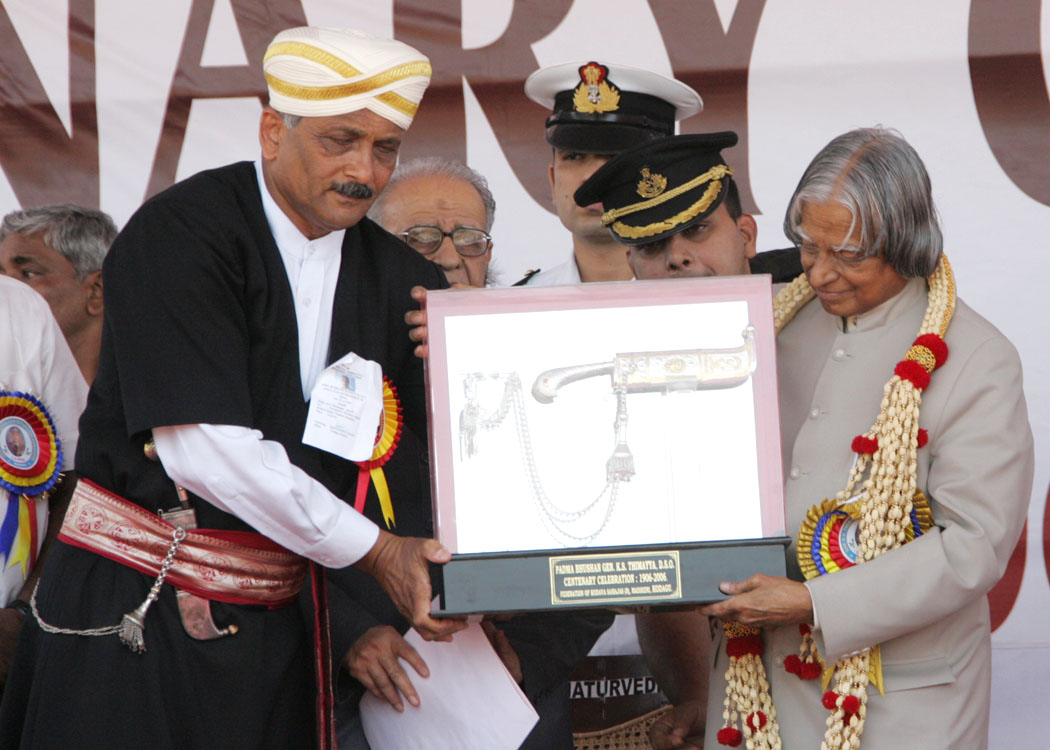
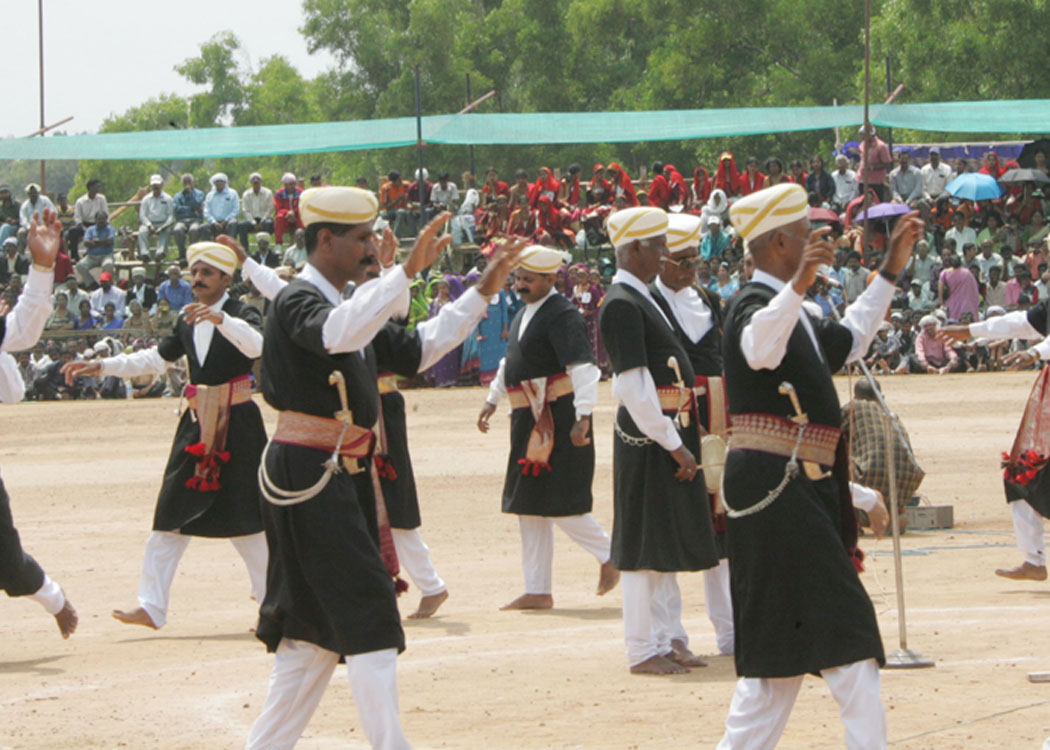
<<Back
|
|